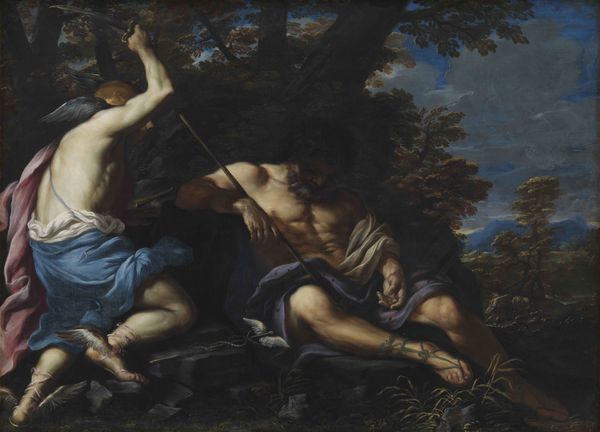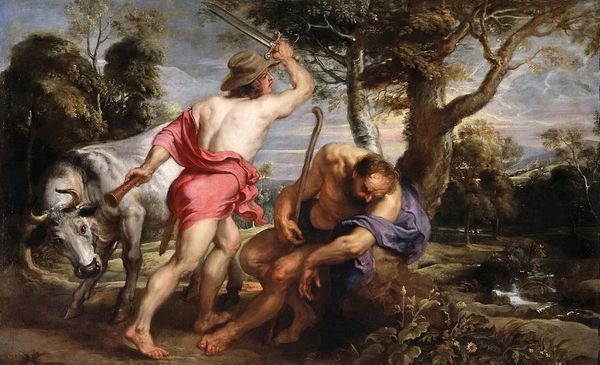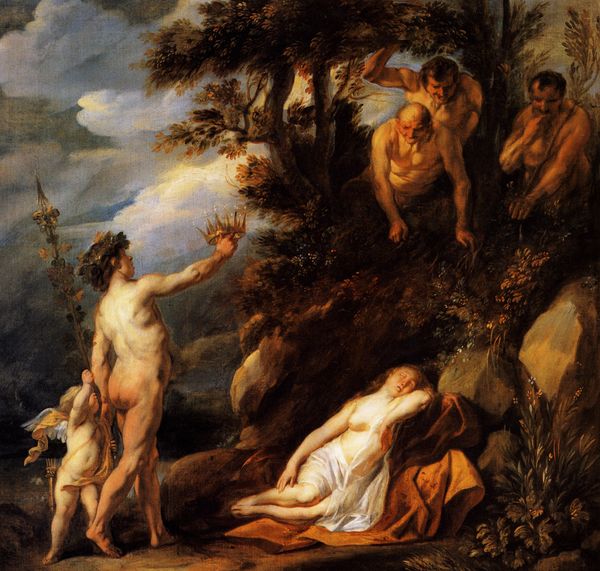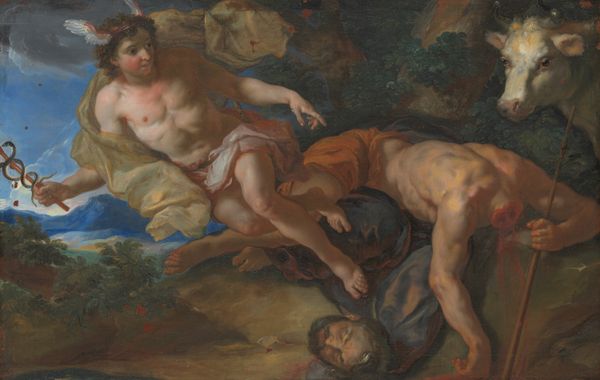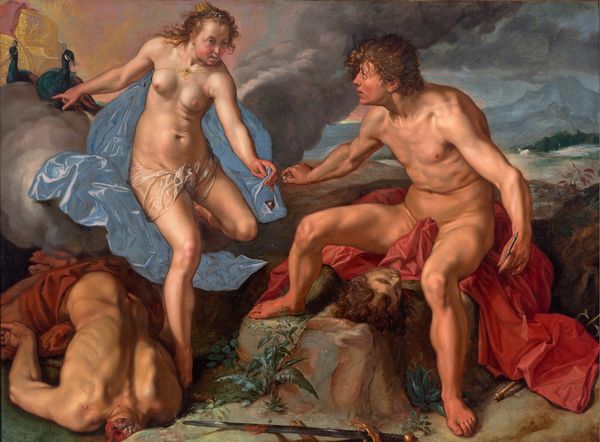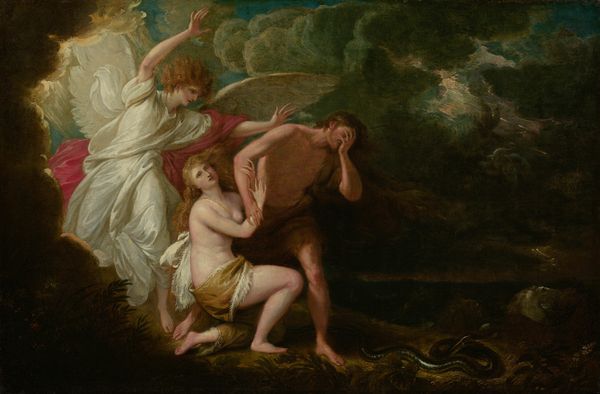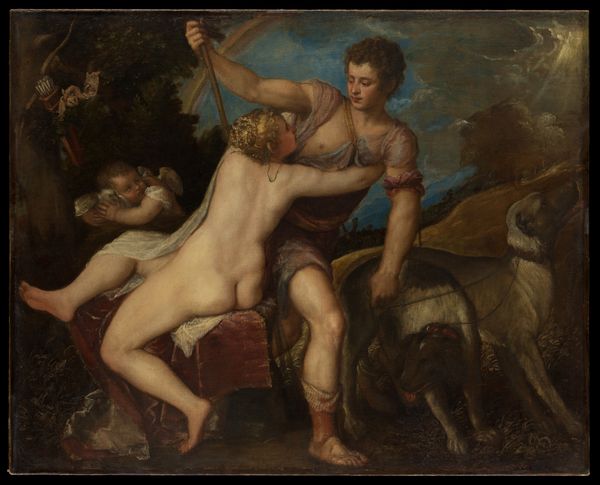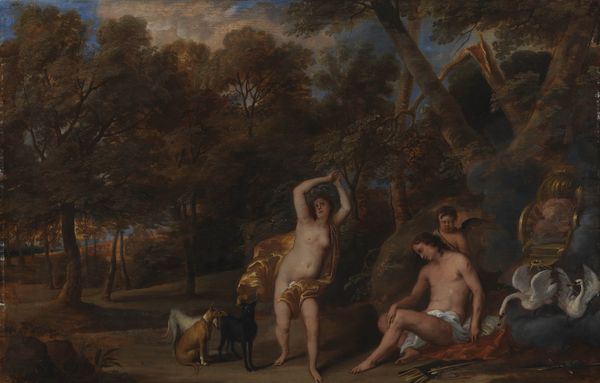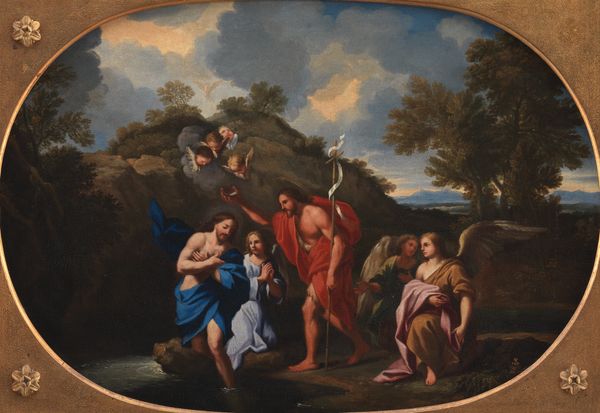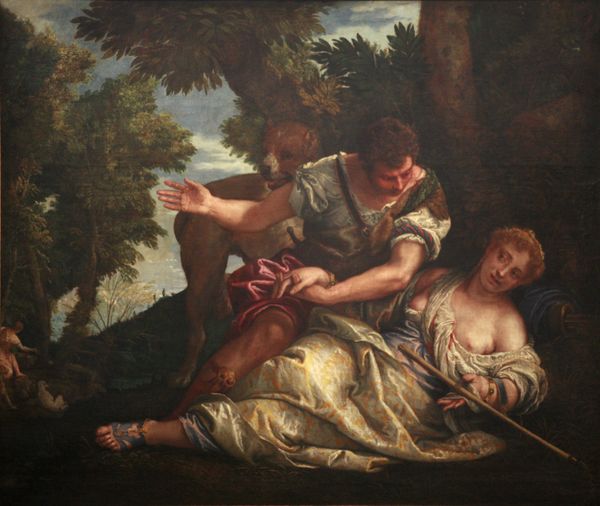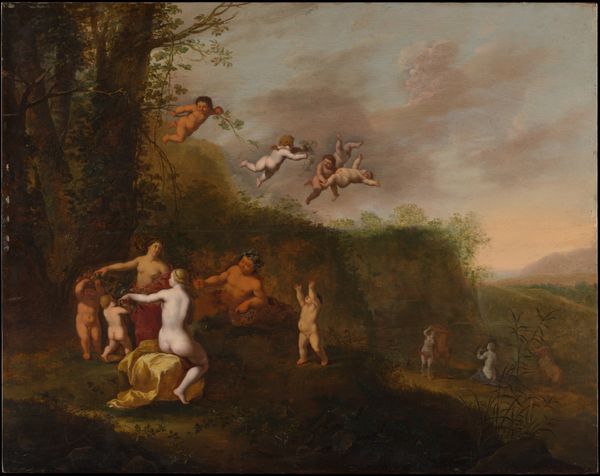
painting, oil-paint, canvas
#
allegory
#
baroque
#
fantasy art
#
painting
#
oil-paint
#
landscape
#
figuration
#
canvas
#
genre-painting
#
history-painting
Dimensions: 96 cm (height) x 132 cm (width) (Netto)
Curator: Let's turn our attention to this striking canvas titled "Apollo Flaying Marsyas," created by Girolamo Troppa sometime between 1651 and 1706. It's quite the scene rendered in oil on canvas, held here at the SMK. Editor: Whew. My first thought? Ouch. The cool detachment in Apollo’s face is almost more unsettling than the… well, you know. Curator: Indeed. This work plunges us right into a rather grim episode from classical mythology. Troppa’s technique draws heavily from the Baroque style. Look at how he’s rendered the textures of skin, the way the light catches on the drapery, and consider the theatrical composition. Editor: Baroque and brutal! Though there’s also this really bizarre contrast… this lovely landscape. It’s idyllic! But then you notice what’s taking place front and center and, well… Curator: And that juxtaposition speaks volumes about power, doesn't it? Apollo, a god, exerts his will—and skill—over the satyr Marsyas, a mortal challenging divine authority in music. The painting functions as an allegory, exploring the concepts of hubris, divine retribution, and, inevitably, craftsmanship. The labor is rendered horrifically violent. Editor: Absolutely! There's such intentionality in that act. Like the performance is meant to display something beyond mere punishment. More about dominance perhaps? You mentioned the musical duel aspect. To think such beauty coming from such cruelty. It's a wild notion, really. Curator: Considering the date this painting was crafted, amidst shifting social structures and a rising merchant class, one wonders about its contemporary resonance. Could it be interpreted as a commentary on the price of ambition, or the suppression of individual expression for the sake of established order? Editor: Perhaps it’s less about societal suppression, and more about Troppa trying to communicate to us, in his language of artistry, of how thin a veil is when dealing with savagery. Like, don't let this pretty scenery fool you… Curator: A chilling, potent thought! It adds another layer of meaning to Troppa’s already complex composition. Editor: Definitely leaves you contemplating how creativity can be both a blessing and, at times, a horrifying curse, doesn't it?
Comments
No comments
Be the first to comment and join the conversation on the ultimate creative platform.
